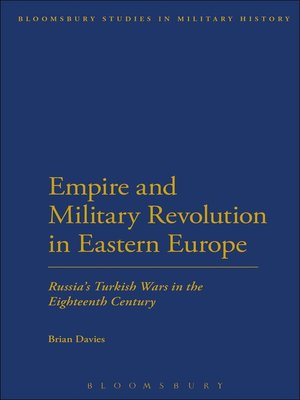Empire and Military Revolution in Eastern Europe
ebook ∣ Russia's Turkish Wars in the Eighteenth Century · Bloomsbury Studies in Military History
By Brian Davies

Sign up to save your library
With an OverDrive account, you can save your favorite libraries for at-a-glance information about availability. Find out more about OverDrive accounts.
Find this title in Libby, the library reading app by OverDrive.



Search for a digital library with this title
Title found at these libraries:
| Library Name | Distance |
|---|---|
| Loading... |
In terms of resource mobilization and devastation the wars between Russia, the Crimean Khanate and the Ottoman Empire were some of the largest of the 18th century, and had enormous consequences for the balance of power in Eastern Europe.
Brian Davies examines how these conflicts characterized the course of Russian military development in response to Ottoman and Crimean Tatar threats and to determine under what circumstances and in what ways Russian military power experienced a "revolution" awarding it clear preponderance over the Ottoman-Crimean system.
A central part of Davies' argument is that identifying and explaining a Military Revolution must involve examining the role of factors not purely military. One must look not only at new military technology, new force and command structure, new tactical thinking, and new recruitment and military finance practices but also consider the impact of larger demographic, economic, and sociopolitical changes.
Brian Davies examines how these conflicts characterized the course of Russian military development in response to Ottoman and Crimean Tatar threats and to determine under what circumstances and in what ways Russian military power experienced a "revolution" awarding it clear preponderance over the Ottoman-Crimean system.
A central part of Davies' argument is that identifying and explaining a Military Revolution must involve examining the role of factors not purely military. One must look not only at new military technology, new force and command structure, new tactical thinking, and new recruitment and military finance practices but also consider the impact of larger demographic, economic, and sociopolitical changes.







